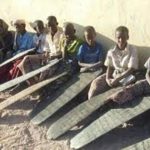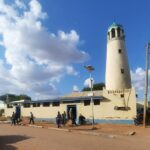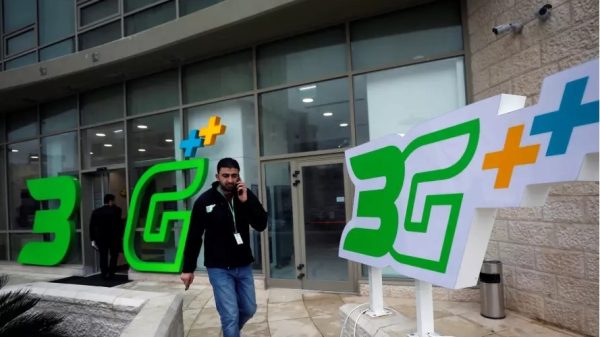
By Abdullahi Jamaa
There is nothing as blissful as watching a roaring sea. When the gigantic Indian Ocean on the pristine East African coast unrolls in front of your eyes the spectacular yet rare vista overwhelms your senses; you can’t resist Mombasa’s seashore, you should be here.
A perfect mix of sunset glows, luscious waves and a silver horizon surrounds the firmament above. The tides emanating from the bluish water cascade into the beachfront occasionally hitting the shore, drifting more sand away into the earth where a beeline of palm trees forms a green streak that beckons.
When you watch back into the pulsing heart of the sea from the beachfront, you can only imagine of a womb, one with sounds of galloping horse; the sea-gull-screams and the whirlwinds are perfect instigators of inspiration and freedom that only Mother Nature gives.
Welcome to Mombasa city the gateway to East Africa, home of tourism and one of world’s leading hospitality hotspots, a city that prides itself with a catalogue of historical, religious and cultural attractions.
While its seashore offers unending appeal to its visitors, the city invites holidaymakers with signature historical structures. Fort Jesus a 16th century Portuguese military structure until today braves the abrasion of the Indian Ocean remaining one of worlds’ historical landmarks.

On the edge of Mombasa’s old town and a few meters away from Fort Jesus there is an Islamic religious relic, the old and iconic Mandhry Mosque. Built in the 1500s, the mosque is the city’s oldest, doubling as one of the only two mosques in the world that have two Mihrabs.
Mombasa’s excellent pattern of historical significance cuts across cultures, religions, politics and business. From Portuguese invasion and Omani Arabs sultanate of 16th century to the late 19th century British protectorate there is something in history that makes the indigenous port city an icon of tourism.
Its rich tradition is a mixture of African, Persian, Arab, Portuguese and British cultures contributing to its rich civilization reflected in magnificent and unique architecture of their imposing buildings, monuments and mosques.
Mombasa’s trading history is unmatched and unequal to anywhere else in Africa. Historical evidence shows that by 15th century it was a thriving business hub connecting China, Persia, and India. Besides the infamous slave trade, it was a great trading centre for commodities such as glass, brass, copper and iron.
“Mombasa has for the longest time been a gateway to the business activities of primarily East Africa as a whole, for this reason, Mombasa offers the opportunity of endless possibility” says Ms.Salma Noor, the director of Mombasa Sister Cities Project, who works on a plan to show case Mombasa to the rest of the world.
The county government of Mombasa is working on an invigorated marketing approach that charts a new roadmap including positioning the city for a global significance in different spheres of life.
The city joined hands with hundreds of others from all the Continents of the world in a diplomacy network that hopes to create and strengthen partnerships between communities.
“In Mombasa, the Sister City Projects is designed as means for cultural exchange between our communities and any other that signs into a sisterhood with us from another nation in order for us to learn more about one another” said Ms. Salma
The network that now boasts over 2000 partnerships within 500 communities has got 133 relationships from Sub-Saharan Africa, Mombasa being part of it. It is envisioned that a wealth of exchanges in the field of sustainable development will give an opportunity for Mombasa to advance its own development goals.
The Plu Media that publishes The Plu Website (www.theplu.co.ke) Kenya’s leading Islamic news and information website interviewed Ms. Salma Noor, Director Sister Cities Mombasa. Below find the full interview:
The Plu Media: What is ‘Sister Cities Projects’ all about?
Ms. Salma: The Sister Cities Projects in Mombasa is an affiliate of the Sister Cities International (SCI) which is a non-profit citizen diplomacy network that creates and strengthens partnerships between communities in the Sister City Network.
In Mombasa, the Sister City Projects is designed as means for cultural exchange between our communities and any other that signs into a sisterhood with us from another nation in order for us to learn more about one another. Therefore, a sister city, country, oblast, prefecture, province, region, state, territory, town, or village relationship is a broad-based, officially approved and a long-term partnership between two communities.
The Plu Media: How many cities and continents are part of this project?
Ms. Salma: All Continents are part of the program with the larger connections being within the European continent which has 652 relationships. There are over 2000 partnerships within 500 communities represented within the network and 1935 US Sister City relationships. Sub Saharan Africa as 133 relationships so far, Mombasa being part of it.
The Plu Media: What is the benefit for Mombasa to be part of this initiative?
Ms. Salma: Sister Cities International is creating a network of sister city partnerships committed to implementing the concepts of sustainable development, as outlined by the international community.
Through innovative, cross-cultural projects, sister city partners will demonstrate that locally based actions can:
(a) Be a catalyst for advancing sustainable development concepts throughout the world;
(b) Improve the quality of life for citizens within their communities;
(c) Advance the knowledge and practice of sustainable development through long-term, sustainable relationships;
(d) Mutually reinforce and integrate the goals of good governance, sustainable economic development, social development and environmental stewardship; and
(e) Achieve concrete results through partnerships with the public and private sector.
Mombasa has already began to benefit from its relationships in that, we have had projects fully funded by some of our partners such as scholarship opportunities with our Sister Cities in China such as Guangzhou for our well performing KCSE students, the setup of a fully equipped dental clinic in Utange by our Sister City in Seattle, a children orphanage supported by our Sister City in Long Beach amongst others.
The Plu Media: Have there been any projects started, executed or even completed through this project?
Ms. Salma: As mentioned above but not limited to it. Recently, we did a ground breaking for the Port Reiz hospital which is still in the works and will serve as a face lift to the already existing hospital in the Port Reiz ward but with the provision of better facilities to the people through external funding.
Through the unit, we have been able to set up a fully functional coconut factory that serves as an income generator for a women group within the county known as Wakesho women group. The ladies are empowered through training and are able to create coconut food products as well as wellness products for the body and hair. They have recently expanded into handwork in weaving of shawls and other clothing materials to which we have a ready market for their products in our sister city.
The Plu Media: What has Mombasa to offer to other sister cities?
Ms. Salma: Mombasa has for the longest time been a gateway to the business activities of primarily East Africa as a whole, for this reason, Mombasa offers the opportunity of endless possibility to its sister cities through opening itself up for investment and mutual benefit in accordance to our laws and guiding principles of engagement.
The Plu Media: Recently you went for a showcase, what was it all about?
Ms. Salma: We recently visited the People’s Republic of China, to represent H.E Governor Hassan Ali Joho in receiving his appointment as the co-president of the 21st Century Maritime Cooperation Committee for a term of three years.
During that time we were honored to showcase Mombasa as a not only customarily as a leisure tourism destination but also as a business tourism destination where our sister cities can engage with us in matters business and development for mutual benefit.
The Plu Media: What are the challenges Mombasa as a city is facing currently?
Ms. Salma: Being a City County, Mombasa is challenged with the burden of insufficient funding for projects. Based on this alone, we are unable to fully champion world class projects of our own without financial assistance. Funding to the counties is dependent on various factors including square area. Mombasa is very small in size however has a large population of over one million people without factoring in migrant labour from neighbouring counties such as Kilifi and Kwale who come to conduct their businesses within the county during the day.
Within the Coastal region, our amenities are utilized by so many people and sometimes upgrading them or ensuring their top notch functionality becomes a problem due to financing, this is the reason as top why we foster such relationships in order to boost our productivity and avenues for growth.
The Plu Media: What are the solutions to those challenges?
Ms. Salma: Resourcing tirelessly for finance be it from our National government or global partners and donors.
The Plu Media: What is that powerful message you would like the people of Mombasa to know regarding this project?
Ms. Salma: I would like the people of Mombasa to know that there is always strength in togetherness, haba na haba hujaza kibaba. Sister City projects is all in for that, we come together to do more, achieve more and ultimately be more!
The Plu Media: Any other information?
Ms. Salma: This year, Mombasa will be hosting the SKAL Congress; this is a huge thing for Mombasa and her people. As we continue to work tirelessly for the overall wellness of our region and the success of the congress, we hope that the people of Mombasa and of Kenya as a whole will realize the effects of growing our destination for business tourism. The ripple effect of this conference will be felt throughout different business sectors within our economy; those in the travel industry, the hospitality industry and even the simple consumer retail industry. Despite the fact that Kenya has done remarkably well, there is still much need for improvement within the sector. All in all this is why we foster such relationships for us to be able to create learning platforms that will benefit us in the long run. We are responsible for one another, for our environment and for our country.














